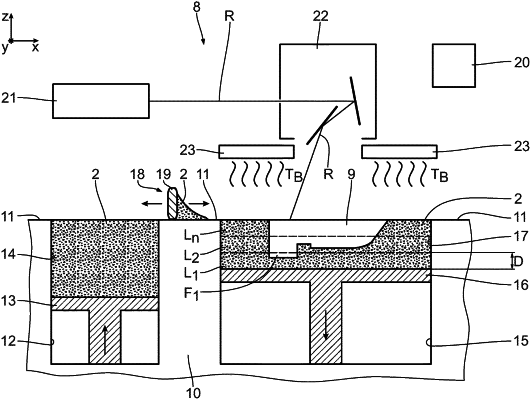| CPC B22F 1/10 (2022.01) [B22F 1/103 (2022.01); B22F 10/10 (2021.01); B22F 10/16 (2021.01); B22F 10/34 (2021.01); B22F 10/37 (2021.01); B22F 10/38 (2021.01); B22F 10/60 (2021.01); B33Y 70/00 (2014.12); B33Y 80/00 (2014.12); B33Y 10/00 (2014.12)] | 29 Claims |

|
1. A process for the additive manufacture of a component, the process comprising the steps:
providing substrate particles and a binder, wherein the substrate particles comprise one or more of metallic substrate particles, vitreous substrate particles and ceramic substrate particles, wherein the binder comprises a thermoplastic polymer and at least one additive;
producing a shaped part, wherein a layer of substrate particles and binder being produced and the binder being selectively melted by electromagnetic radiation to produce a shaped part layer, at least one further layer of substrate particles and binder being produced and the binder being selectively melted by the electromagnetic radiation to produce at least one further shaped part layer, wherein the binder has a melt viscosity of from 1 Pa·s to less than 500 Pa·s at a temperature which is at 10° C. above a temperature Ts, wherein the temperature Ts is one of a glass transition temperature and a crystallite melting temperature of the binder;
taking the shaped part out from the layers produced;
removing the binder from the shaped part, with the at least one additive being removed from the shaped part at least partly before the thermoplastic polymer; and
sintering the shaped part to obtain the component.
|